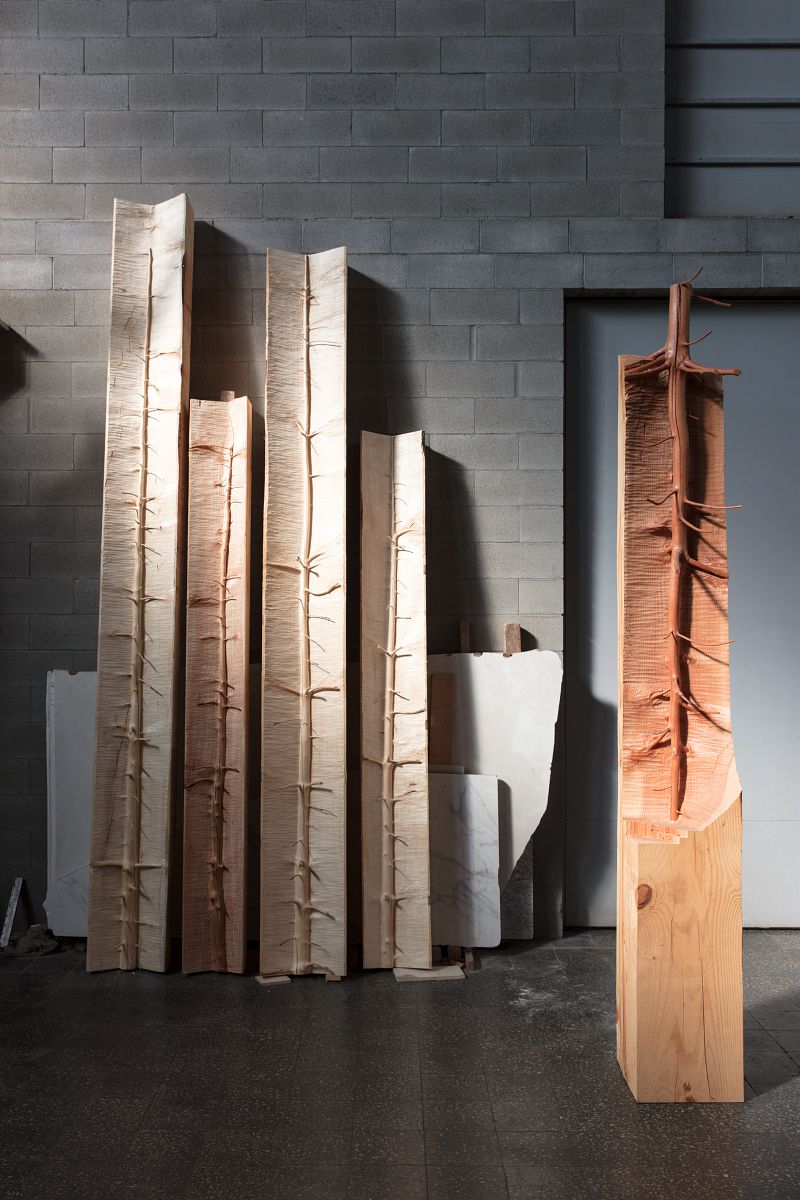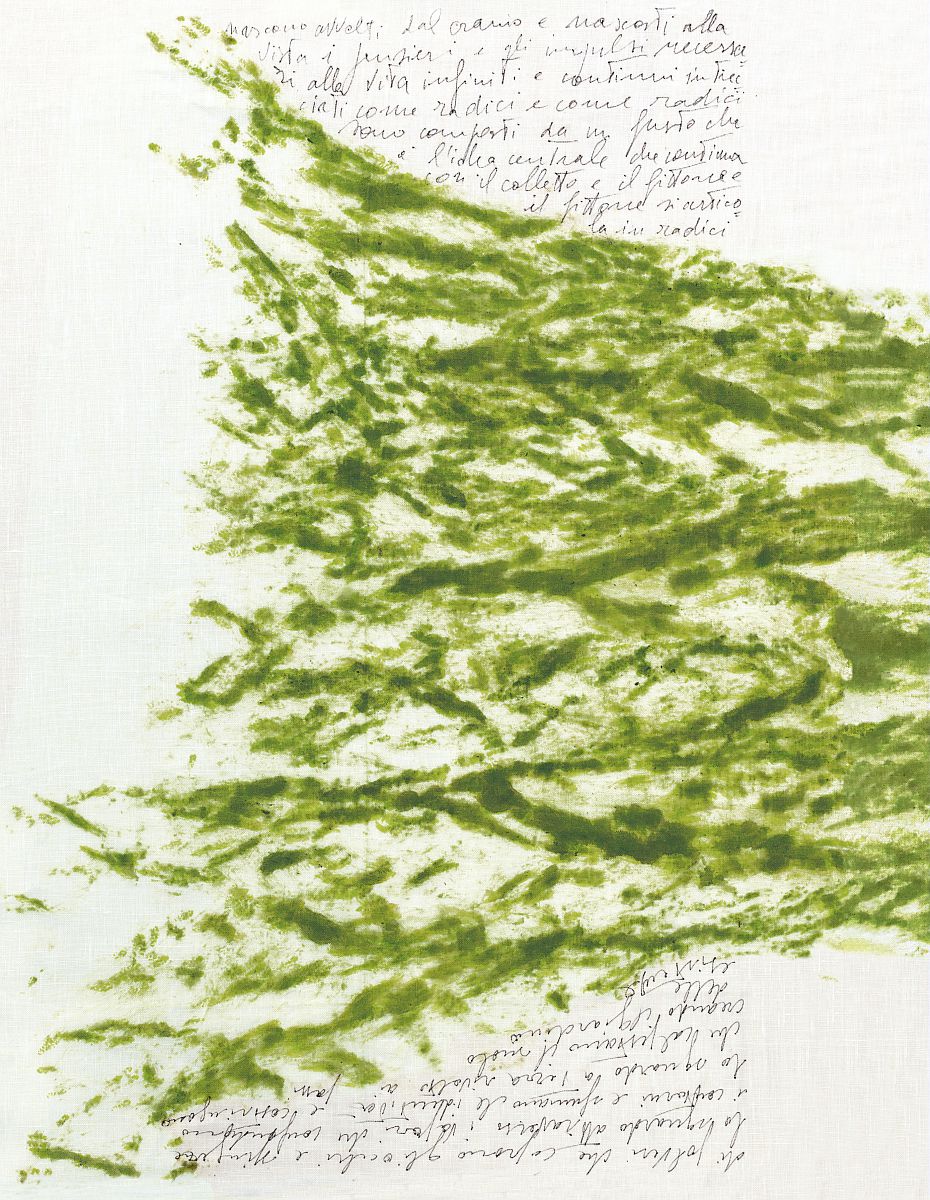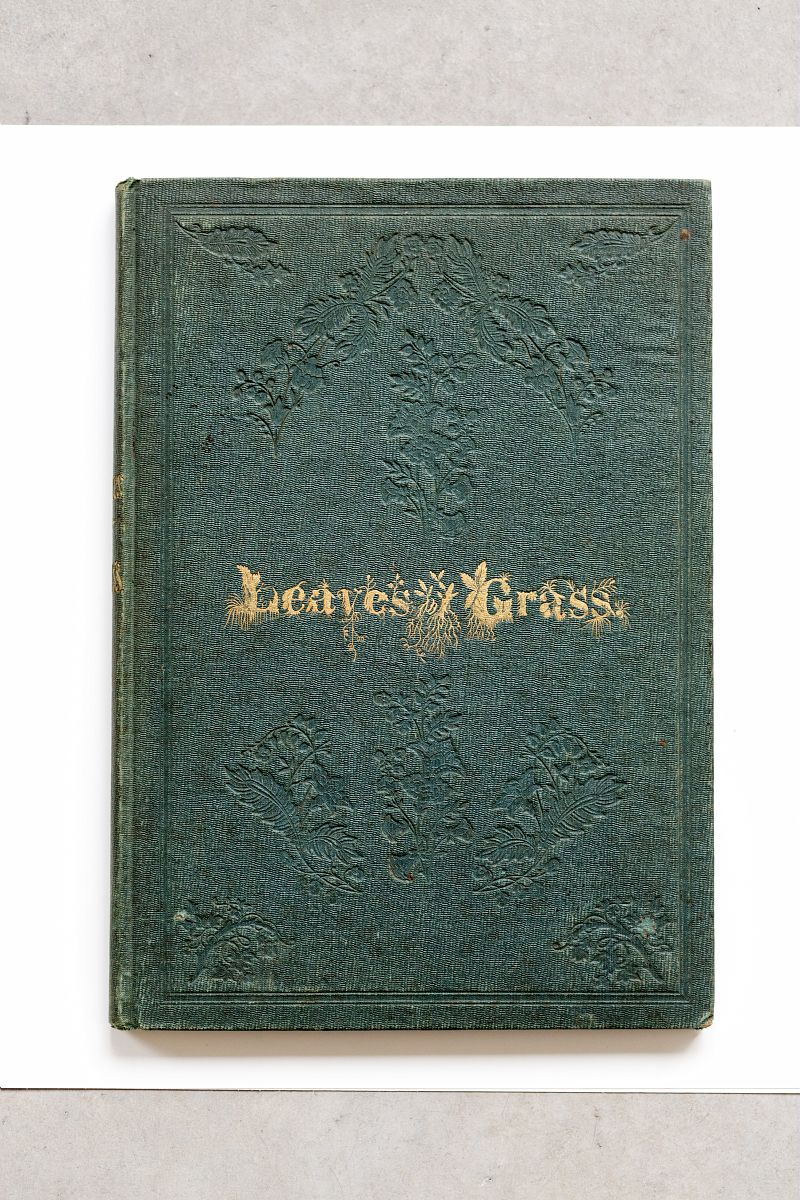The National Library of France welcomes Giuseppe Penone, a major figure in contemporary art, whose work questions, with force and poetry, the links between man and nature. Penone has produced Pensieri e linfa ( Sap and thought ) for the occasion , a spectacular installation designed from a huge tree trunk around which a text written by the artist is wrapped.
Alongside this emblematic work, unpublished and monumental pieces stand alongside drawings, photographs, bibliophile books and artists’ books, as well as a series of 18 engravings recently created by the artist, who donated them to the Library. This carte blanche to one of the major artists of our time is an invitation to stroll through a work that questions the notions of trace, time and memory, resonating here with the heritage collections and the missions of the BnF.
Penone, a major figure on the international art sene
Born in 1947 in Garessio, a small rural town in Italian Piedmont, Giuseppe Penone studied sculpture at the Accademia di Belle Arti in Turin. At the age of 21, he carried out a series of actions in which he intervened in the growth process of a young tree. This inaugural work was noticed by the critic Germano Celant who associated the young artist with the Arte Povera movement, advocating an art freed from traditional practices and materials in order to privilege the creative process to the detriment of the finished object.
Penone was interested very early in the possibilities of bronze as well as in body imprints as memory and matrix of the work. His work, anchored in the idea of an interdependence between nature and culture, associates formal explorations of natural materials (wood, bronze, marble, stone, acacia thorns…) and fragments or imprints of bodies.

Celebrated worldwide, winner of the prestigious Praemium Imperiale, the artist notably represented Italy at the Venice Biennale in 2007 and was the subject, in France, of a retrospective at the Center Pompidou in 2004 followed by a exhibition of his monumental sculptures at the Palace of Versailles in 2013.
Memory and writing at the heart of the work

If Giuseppe Penone has always questioned the relationship between nature and culture in his work, his thinking around writing, trace and memory is less well known. It is therefore natural that the BnF today invites the artist to present his work from this angle, thus echoing the collections and missions of the Library but also the symbolism and architectural characteristics of the François-Mitterrand site.
Produced especially for the exhibition to which it gave its title, Pensieri e linfa ( Sap and thought ) is its flagship work: it is a spectacular installation formed by the rubbing, on fine linen canvas, of the trunk. an acacia tree 30 meters long and a handwritten text by the artist that runs on either side of the imprint of the trunk in regular sequences similar to the pages of an open book.
Penone’s text has been translated into French by Jean-Christophe Bailly, author of numerous writings on art but also of stories, poems and plays. Excerpts from this translation, read by Jean-Christophe Bailly himself, can be listened to in the exhibition.
The course

Deploying in ramifications starting from Sève and thought , the course reveals a network of filiations between chronologically distant works, and highlights, in the evolution of forms and proposals, the recurrence of questions. We discover several unpublished pieces such as the twelve monumental Alberi libro (twelve tree-books carved like an open book) or the surprising series of four large paintings with fingers Leaves of grass , inspired by the first edition of the poem by Walt Whitman. “Historical” works (such as the rubbing of a Verde del Bosco tree trunk from 1986), sculptures ( Pensieri di foglie , A Occhi chuisi) or a set of graphic pieces (drawings, photographs, prints and artists’ books) mostly from the BnF collections shed new light on the intimate links that Giuseppe Penone has forged with the writing and imagination of the delivered.
Organisation of the exhibition
Marie Minssieux-Chamonard , curator at the Rare Books reserve, BnF,
Cécile Pocheau-Lesteven , curator at the Prints and Photography Department, BnF